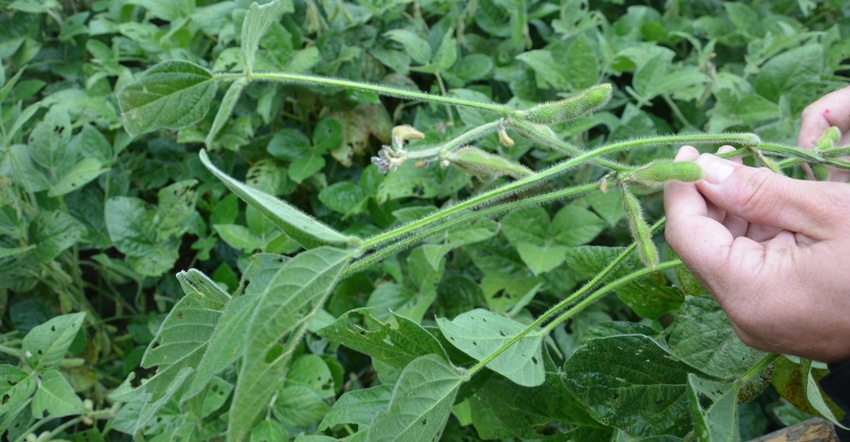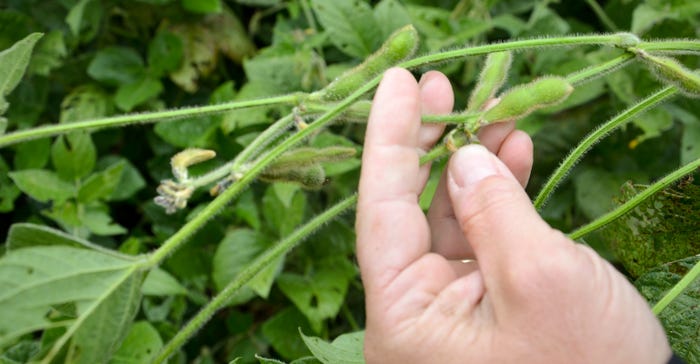
Soybean yields are all over the board in Indiana this year. With wet conditions early, slug damage, lots of replanting and late planting, is it any wonder? What may have sealed the deal on a big yield range were variable rainfall patterns in late summer.
“Some areas, particularly in northern Indiana, got timely rains, and other areas didn’t,” says Steve Gauck, a sales agronomist for Beck’s based in Greensburg, Ind. Beck’s is the sponsor of Soybean Watch ’17. Many areas in central and southern Indiana received only scattered showers or at least more infrequent rains during August and September.
“We once thought that August was the key month for reproduction for soybeans, when you needed ample moisture for top yields,” he says. “It’s still crucial. However, we’re finding that unless you planted very early or planted an early variety, early to mid-September can be crucial, too. There are still things going on related to increasing bean size and adding yield at R6. For years people thought it didn’t make much difference what happened after R5.”
Dry weather impact
Gauck walked the Soybean Watch ’17 field in mid-September to get a feel for how the crop was progressing. It was planted June 6 due to weather delays, thinned by slugs, and then hit with a 6-inch rain in early July. However, the field received little rain in August and early September. Ironically, a light rain was teasing the area when Gauck visited.
He found evidence that the dry spell during reproduction, despite ample to excess rain early, had likely impacted yield somewhat. When he checked the field, it was primarily still green, although a few spots were beginning to show hints of yellow leaves. That was especially true on the slight rises in the field, which were likely lighter soils and perhaps impacted the most by dry weather.
“We saw plants which had three beans in most pods, but only two beans in a few pods, especially in the middle to upper part of the plant,” he observes. “I would suspect that dry weather may have influenced the number of beans per pod.”
 FEWER PODS: If soybeans are facing dry weather, the plants may abort the last few pods that might have formed otherwise.
FEWER PODS: If soybeans are facing dry weather, the plants may abort the last few pods that might have formed otherwise.

There also weren’t as many pods as there could have been. “We found instances where it was obvious another pod started forming around a clump of pods and then aborted,” Gauck adds. “That’s also likely due to dry weather at the wrong time.”
The factor Gauck couldn’t evaluate fully during that visit was possible impacts on soybean size. Most of the plants were still active, and if a true rain occurred soon, it could benefit soybean size. The area finally received some rain a few days later. Time will tell if it helped.
About the Author(s)
You May Also Like




